NCERT Solutions for Class 9 History Chapter 1 – Events and Processes
NCERT Solutions for Class 9 History Chapter 1 – Events and Processes: The French Revolution are essential for understanding revolutionary movements in the CBSE curriculum. These well-structured answers help students grasp topics like causes of the French Revolution, the fall of monarchy, and the rise of democracy in France. Designed as per the latest syllabus, these solutions strengthen conceptual clarity and improve exam preparation. Ideal for revision and practice, they develop historical thinking and analytical skills, making them a valuable study tool for scoring well in Class 9 Social Science exams.
NCERT Solutions For Class 9 History – Events and Processes – Exercise Images
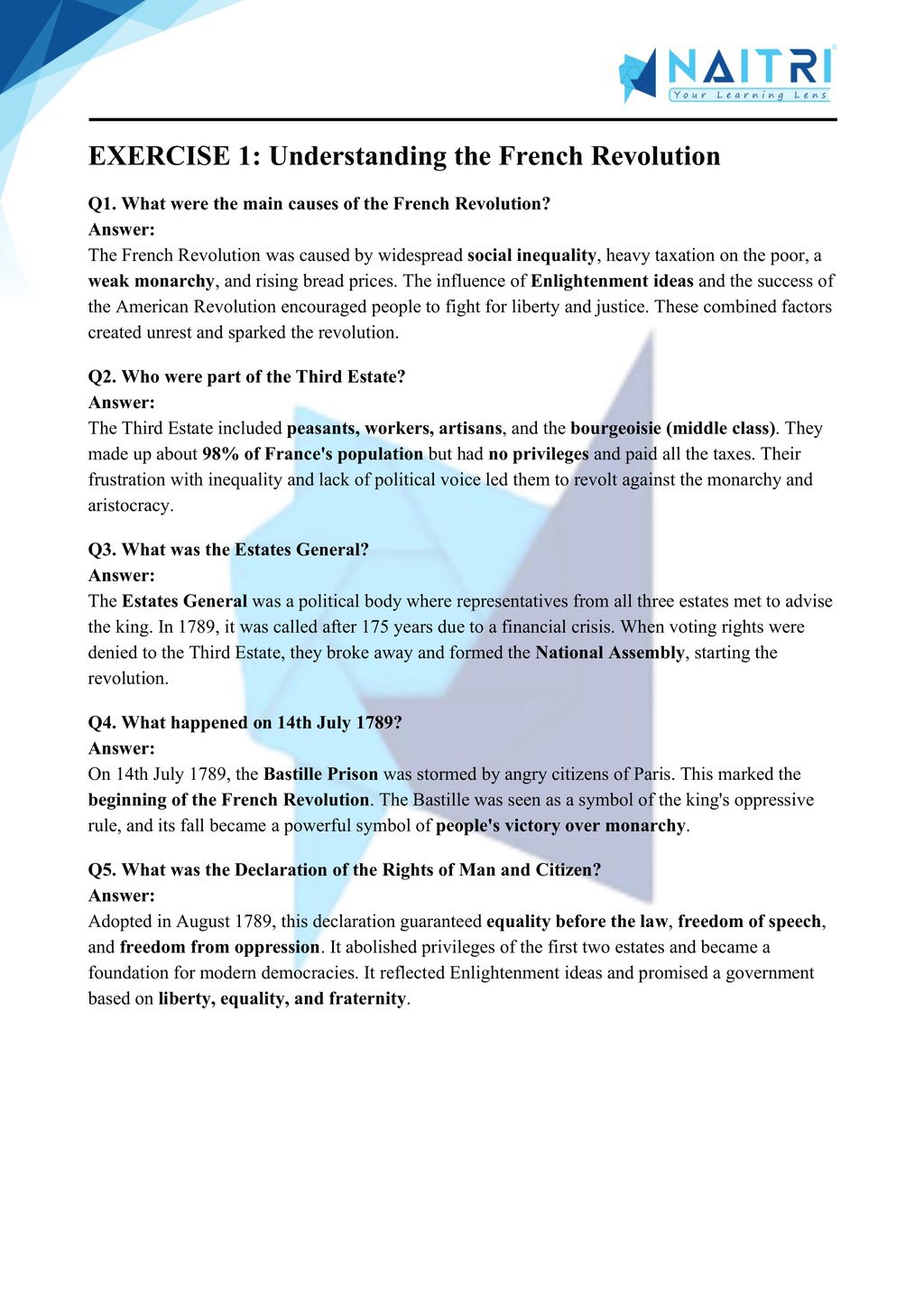
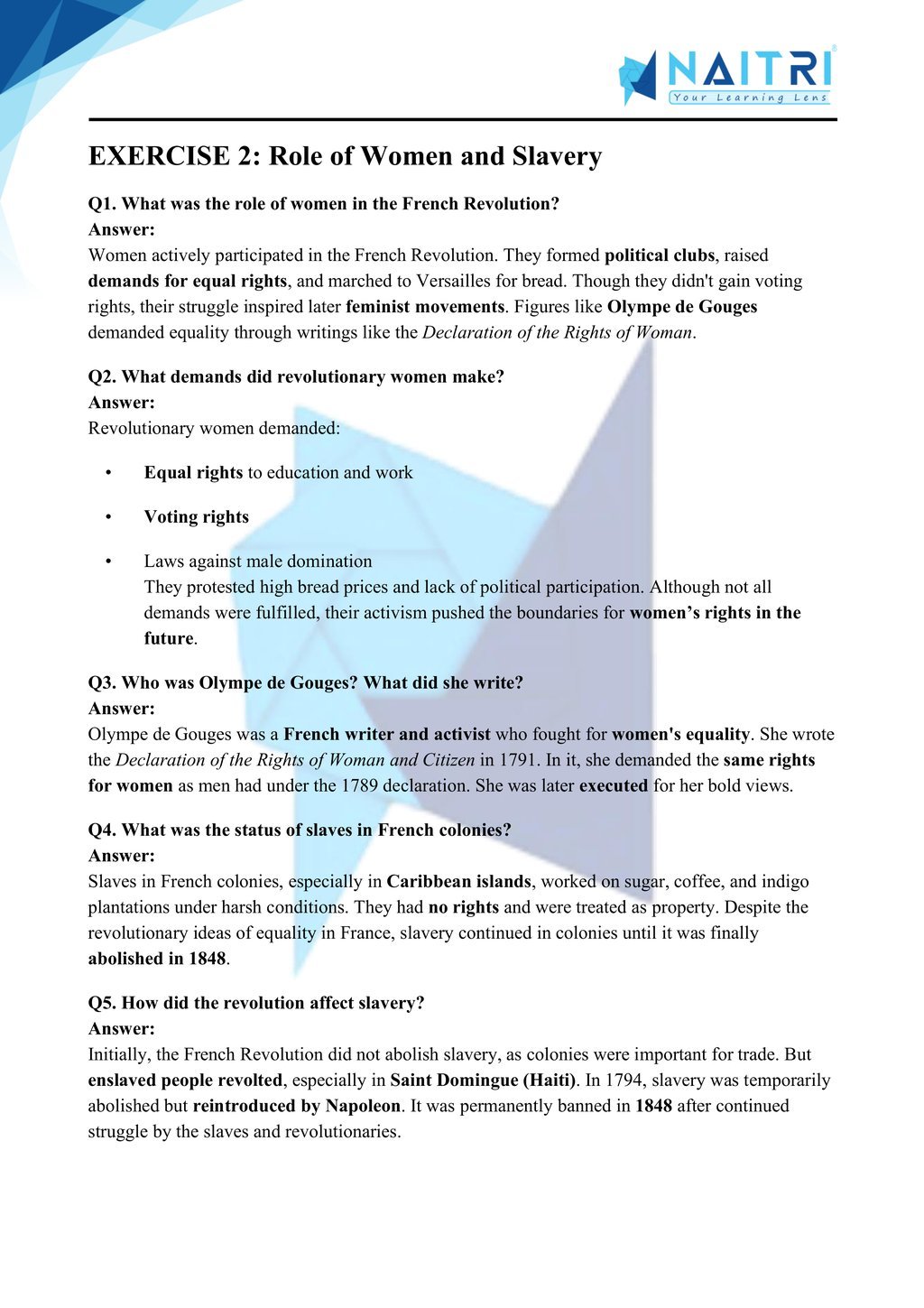
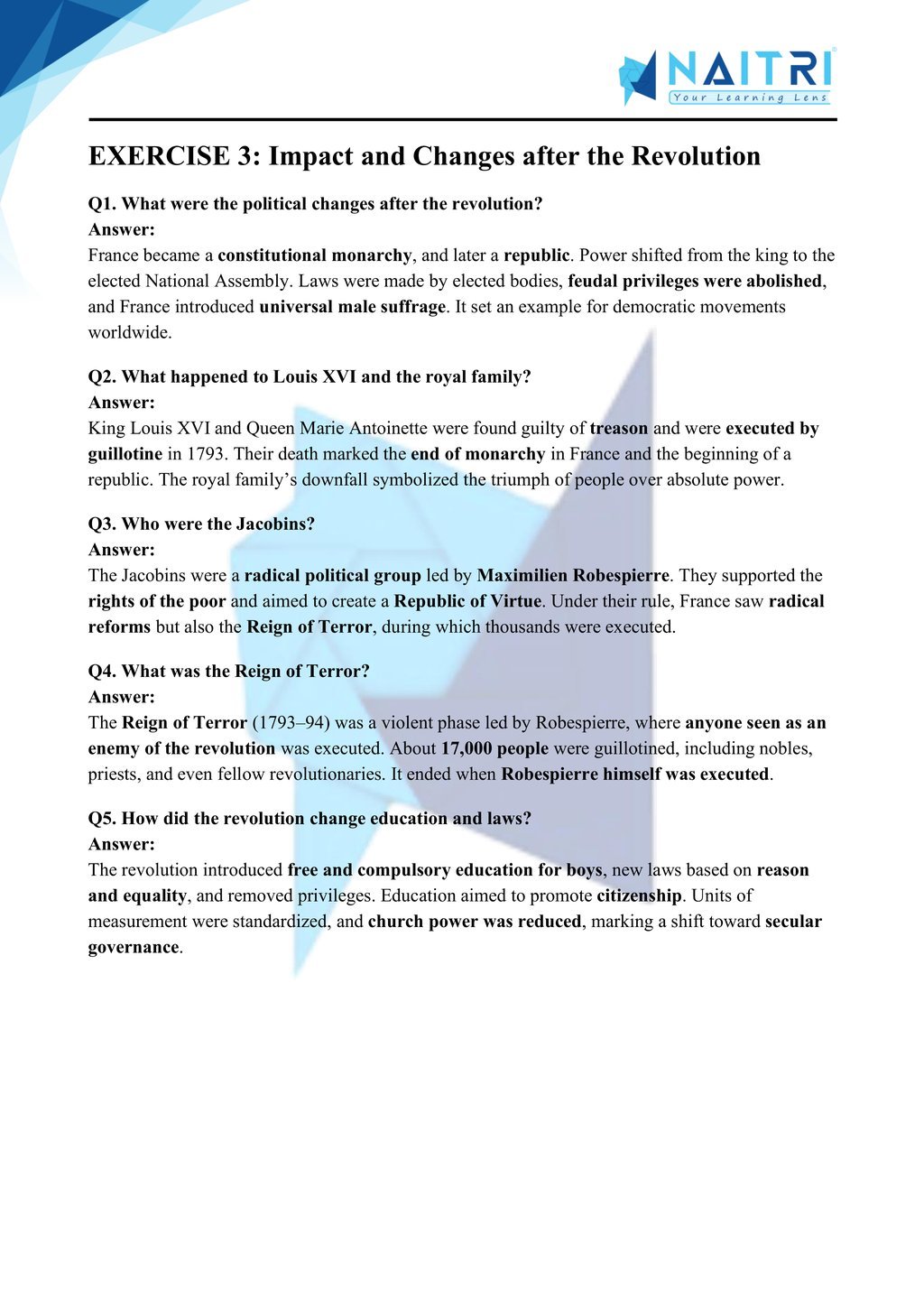
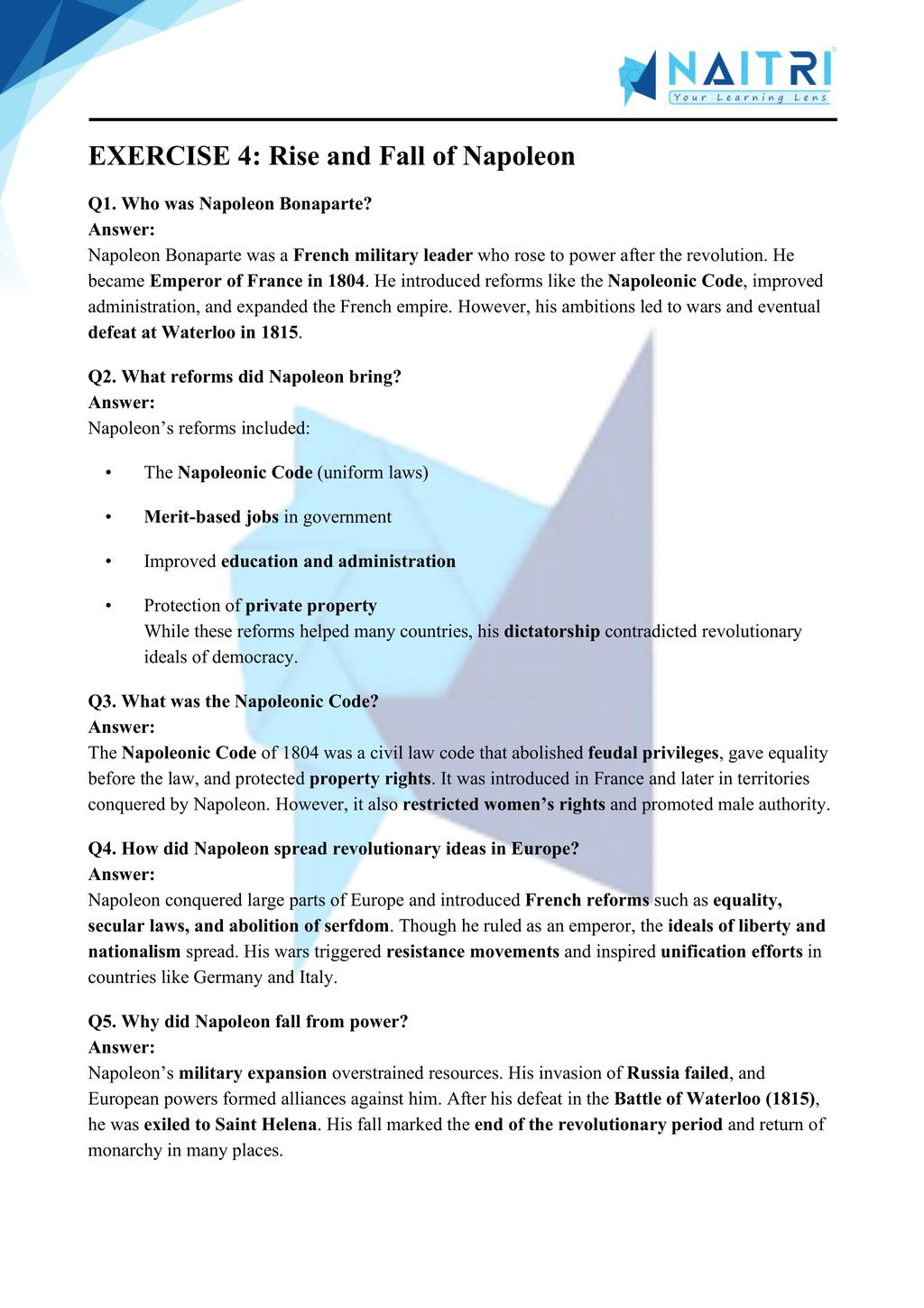
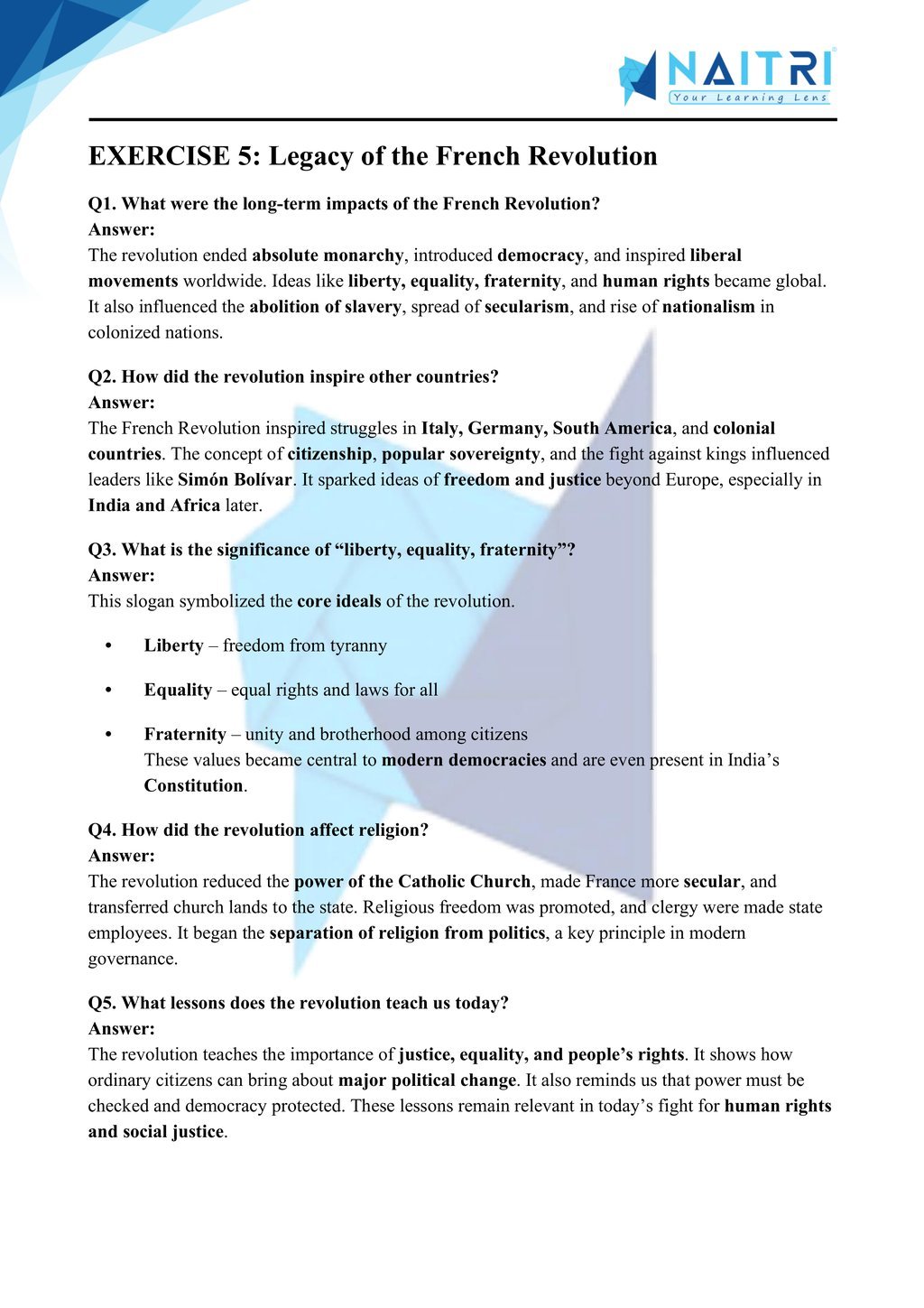
Experience Science Like Never Before – With AR!
Understanding Events and Processes is now more exciting and immersive! With the NAITRI App, you can explore complex history concepts through Augmented Reality (AR). Experience revolutions ignite, political ideas spread, and historical changes unfold — right in front of you. Our AR-powered lessons make learning interactive, 3D, and fun, helping you retain concepts better and enjoy every topic.



Visualize . Interact . Understand . The future of learning is here
Events and Processes – Important Questions with Answers
1. What was the French Revolution?
Answer:
The French Revolution began in 1789 in France, ending absolute monarchy and feudal privileges. It introduced principles of liberty, equality, and fraternity and inspired democratic movements globally.
2. What were the main causes of the French Revolution?
Answer:
Economic hardships, social inequality, unfair taxation, Enlightenment ideas, and the extravagant lifestyle of Louis XVI and his court triggered widespread unrest, leading to revolution.
3. Who were the three estates in France before the revolution?
Answer:
French society was divided into three estates: First (clergy), Second (nobility), and Third (common people), with only the Third Estate bearing the tax burden.
4. What role did the Estates General play in the revolution?
Answer:
The Estates General was called in 1789 to solve France’s financial crisis. The Third Estate formed the National Assembly, demanding a constitution and reforms.
5. What was the significance of the storming of the Bastille?
Answer:
On 14 July 1789, revolutionaries stormed the Bastille prison, a symbol of royal tyranny. It marked the beginning of the French Revolution.
6. What changes did the National Assembly bring?
Answer:
The National Assembly abolished feudal privileges, adopted the Declaration of Rights of Man and Citizen, and limited monarchy through a constitutional framework.
7. What is the Declaration of the Rights of Man and Citizen?
Answer:
It was a revolutionary document asserting all men are born free and equal, ensuring rights to liberty, property, security, and resistance to oppression.
8. How did the revolution affect the monarchy?
Answer:
The revolution led to the execution of King Louis XVI, the abolition of monarchy, and the establishment of France as a republic in 1792.
9. Who were the Jacobins?
Answer:
Jacobins were radical revolutionaries led by Robespierre who supported equality, executed enemies of the revolution, and briefly established a democratic republic.
10. What was the Reign of Terror?
Answer:
From 1793 to 1794, under Robespierre, thousands were executed by guillotine for being ‘enemies of the revolution’, including nobles, clergy, and moderates.
11. How did Napoleon come to power?
Answer:
Amid chaos after the Reign of Terror, Napoleon, a military general, seized power in 1799 through a coup, establishing authoritarian rule.
12. What reforms did Napoleon bring?
Answer:
Napoleon introduced legal reforms (Napoleonic Code), centralized administration, promoted education, and improved infrastructure, though he limited political freedoms and press.
13. How did the revolution influence other countries?
Answer:
The revolution spread ideals of democracy and nationalism across Europe and inspired revolutionary movements in Latin America and Asia.
14. How did the revolution affect women?
Answer:
Women demanded equality, formed clubs, and participated in protests. However, they were denied political rights and their clubs were later banned.
15. What role did peasants play in the revolution?
Answer:
Peasants revolted against feudal lords, burned records, and supported reforms that abolished feudal dues and redistributed land more fairly.
16. What happened to the Church during the revolution?
Answer:
Church lands were confiscated, clergy were made state employees, and religion lost its political influence, though later restored partly by Napoleon.
17. What were the revolutionary clubs?
Answer:
Political clubs like the Jacobins and Cordeliers were formed where citizens discussed issues, proposed laws, and mobilized public support for revolution.
18. What were the economic effects of the revolution?
Answer:
Feudal dues were abolished, land was redistributed, new taxation policies were introduced, and the economy eventually stabilized under Napoleon’s reforms.
19. Why was King Louis XVI executed?
Answer:
He was tried and found guilty of treason for conspiring with foreign powers against the revolution. He was guillotined in January 1793.
20. Who were the sans-culottes and what was their role?
Answer:
They were radical working-class men who supported the Jacobins. They demanded social equality and played a major role in revolutionary violence.
21. What was the Directory and why did it fail?
Answer:
The Directory (1795–1799) was a five-member executive. It was corrupt and inefficient, losing public support, which led to Napoleon’s rise.
22. What changes occurred in art and culture during the revolution?
Answer:
Revolutionary ideas were reflected in art, festivals replaced religious ones, and symbols like the tricolour flag and liberty cap became iconic.
23. How did the French Revolution redefine citizenship?
Answer:
The revolution granted rights and responsibilities to citizens, abolishing privileges by birth and introducing the concept of merit-based public roles.
24. What is the long-term legacy of the French Revolution?
Answer:
It laid the foundation for modern democracies, promoted the idea of equality before law, and continues to inspire freedom movements globally.
25. What lessons does the French Revolution teach us today?
Answer:
It teaches the importance of justice, equality, and people’s participation in governance. It also warns against extremism and abuse of power.
Events and Processes introduces students to one of the most significant political revolutions in world history. It covers the social, economic, and political conditions in 18th-century France, the role of Enlightenment thinkers, and the rise of revolutionary ideas. The chapter explores key events like the storming of the Bastille, the Reign of Terror, and the rise of Napoleon. It emphasizes the birth of democratic ideals such as liberty, equality, and fraternity, which continue to shape political systems today.
Download Naitri App
Easy, Visual Learning — Right on Your Phone
Learn with Augmented Reality! The Naitri app makes CBSE and MP Board concepts interactive and fun — even in low-resource settings. Watch lessons, complete homework, take tests, and track progress — all in one place. Anytime. Anywhere.
Available on








